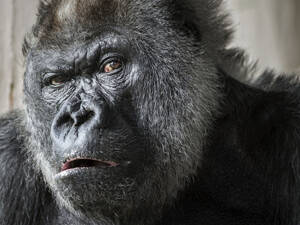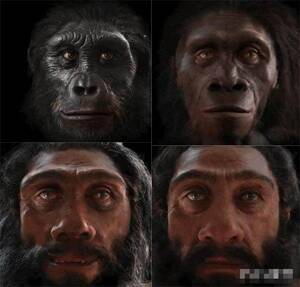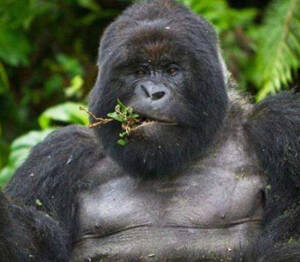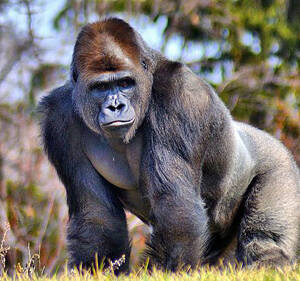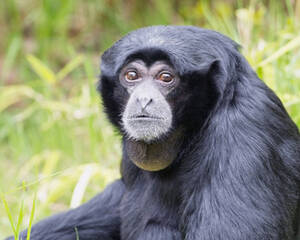Nomascus gabriellae
IUCN
LCBasic Information
Scientific classification
- name:Nomascus gabriellae
- Scientific Name:Nomascus gabriellae,Red-cheeked Gibbon、Buff-cheeked Gibbon、Buffy-cheeked Gibbon、Southern Yellow-cheeked Crested Gibbon,Red-cheeked black ape, yellow-cheeked crested gibbon, light yellow-cheeked gibbon
- Outline:Primates
- Family:Hylobates B.Gibbon
Vital signs
- length:60-80cm
- Weight:7-11kg
- lifetime:30-50years
Feature
There is a patch of orange or yellow hair on each side of the cheek from the corner of the mouth to the top of the ear.
Distribution and Habitat
Distributed in Southeast Asia, including southern Laos, eastern Cambodia and central and southern Vietnam. The distribution range is from the Ba River in Gia Lai and Phu Yen Provinces, Vietnam, 13°00'-13°10'N and the Sre Pok River in the north to the Nui Ong Nature Reserve at 11°01'N in Binh Thuan Province in southern Cambodia and southeastern Cambodia (east of the Mekong River).
It likes lowland forests and lives at altitudes between 100-1500 meters above sea level. It is rarely seen above 2000 meters. It mainly inhabits tropical rainforests and subtropical mountain wet monsoon evergreen broad-leaved forests. Activities and foraging are carried out in the canopy or middle layer of tall trees, and rarely go down to small trees below 5 meters.
Appearance
The red-cheeked gibbon is very similar to the black-crested gibbon. Compared to other apes of the same genus, the red-cheeked gibbon is smaller in size, weighing 7-11 kg and 60-80 cm in length. The fur is long and coarse. The male is mainly black with a faint silver color, except for a patch of orange-red or yellow hair on each side of the cheek from the corner of the mouth to the top of the ear. The female's fur is usually brownish yellow with a gray tint, with no black hair on the abdomen and a black border on the ears. Adult females have slightly reddish-brown hair on their genitals, and usually have traces of white stripes around the face.
Fur color changes are a sign of maturity in this species. The timing of color changes is variable and may take several months to complete. The fur of a newborn gibbon is bright yellow. In just a few months, the color changes to black; only two patches around the cheeks remain yellow. During this period, the fur of subadults resembles that
Details
Red-cheeked Gibbon (scientific name: Nomascus gabriellae) is also known as Red-cheeked Gibbon, Buff-cheeked Gibbon, Buffy-cheeked Gibbon, Southern Yellow-cheeked Crested Gibbon, and has no subspecies.
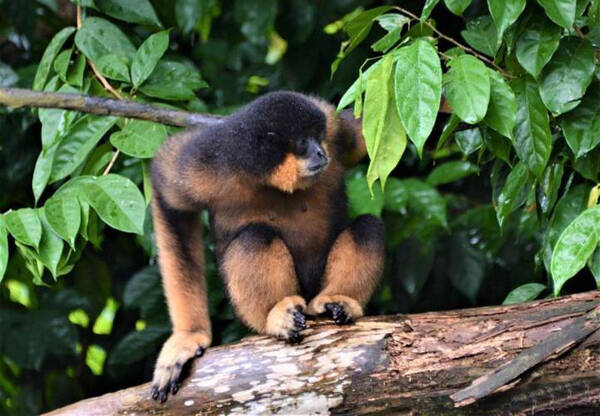
Red-cheeked gibbons have a strong sense of territory, with each family group covering about 20 to 50 hectares. Males and females often perform vocal duet-like calls and actively chase intruders from their territory to defend their territory.
Red-cheeked gibbons are very greedy and naughty. They mainly eat fruits, and also eat a small amount of flowers, leaves, buds and insects. They don't drink much water, but mainly rely on the moisture in food, or lick the raindrops on the leaves after rain, and only occasionally go to the ground to drink water during spring drought. They eat the tender shoots and fruits of plants, as well as insects and bird eggs. They rarely go to the ground to drink water, and mainly rely on drinking dew on leaves.
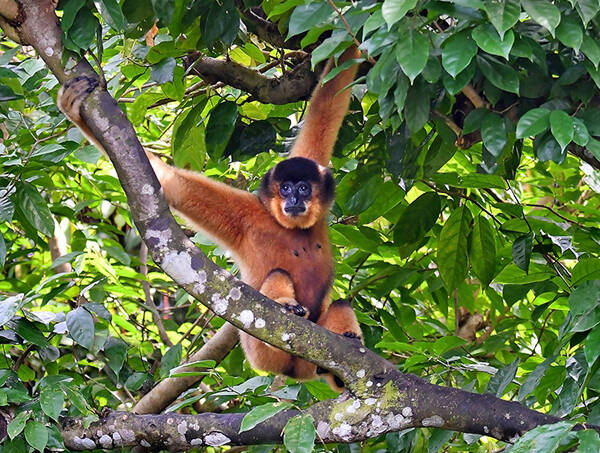
Populations of red-cheeked gibbons are mostly isolated and distributed in islands. The shrinking and changing habitats are the root causes of the endangered species, which is threatened by habitat loss (from development and logging) and hunting. In addition, extensive military activities causing habitat destruction have also had an adverse impact on the species. The species has not yet been effectively protected, even in nature reserves and national parks. Although there are some local laws prohibiting the hunting of these animals, they are poorly enforced. The only countries that enforce international trade laws in Europe and the United States prohibit the sale of these animals.
The red-cheeked gibbon is the most common crested gibbon in Cambodia and Vietnam. In Vietnam, no population data on the red-cheeked gibbon were available in the 2000 gibbon status review (Geissmann et al., 2000). However, the species is fairly common in some areas of the Great Lakes Province, and the Lam Dong Plateau appears to support relatively large populations of the species (Geissmann et al., 2000). After 2000, gibbon surveys have been conducted at many sites across the species' range, with significant populations found both inside and outside protected areas. In Cambodia, red-cheeked gibbon populations are relatively well documented, suggesting that Cambodia hosts the most significant population of the species globally (Channa and Gray, 2009). In the Seima Biodiversity Reserve, estimated population densities for these species range from 0.71–0.74 individuals per km2 (Kidney et al. 2016), with estimates of numbers in different areas of the core zone ranging from 646–972 individuals and 432–832 individuals per km2, respectively. Other significant populations include 15–273 individuals in Phnom Prich Wildlife Sanctuary (Channa and Gray 2009). While previous surveys indicated that Snuur and Nam Leer Wildlife Sanctuaries harbored significant populations (Traeholt et al. 2005), relatively recent and ongoing rapid habitat loss within these areas suggests that these populations may no longer be significant (Channa and Gray 2009). Short-term surveys in Lomphat Wildlife Sanctuary and Prey Khieu yielded no records of gibbons (Channa and Gray 2009).
Listed in the "Red List of Threatened Species of the World Conservation Union" (IUCN) 2015 ver3.1-Endangered (EN).
Listed in Appendix I, Appendix II and Appendix III of the Convention on International Trade in Endangered Species of Wild Fauna and Flora (CITES) 2019 Edition Appendix I.
Protect wild animals and eliminate game.
Maintaining ecological balance is everyone's responsibility!

